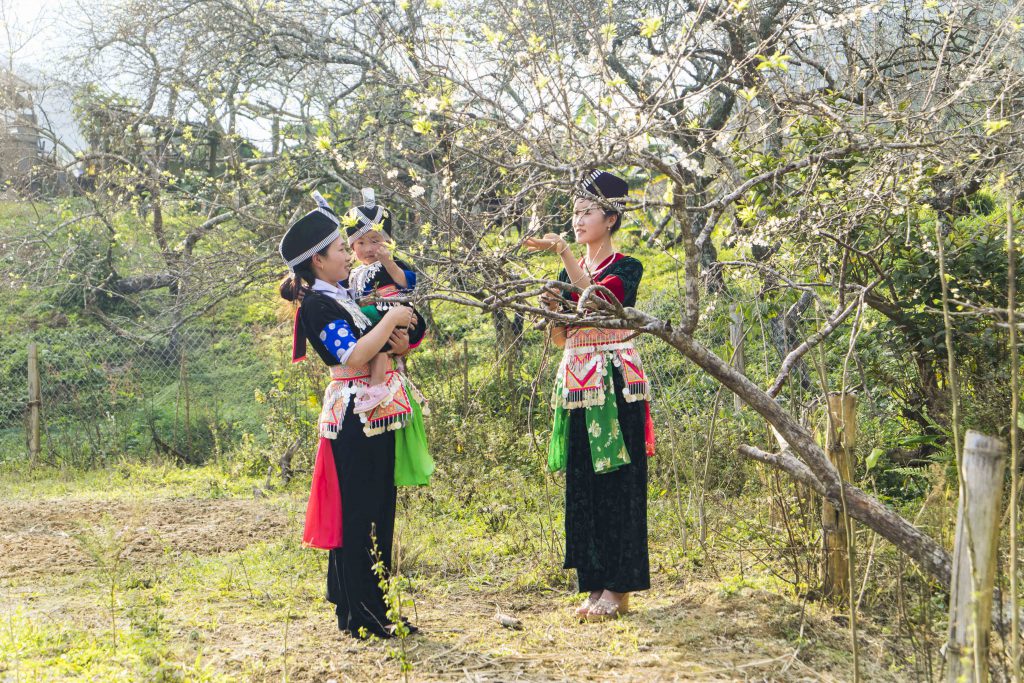Nguyen Thanh Hai
Majestic landscapes, wild beauty, and cultural diversity draw visitors to Western Nghe An

Nghe An is not only known for its deep-green Lam River, which is often celebrated in poetry, music, and paintings, nor for its extensive coastline. Embarking on a journey into Western Nghe An, you will be astounded by majestic natural landscapes and the unique cultures of local indigenous people.
Western Nghe An comprises 11 districts, accounting for a whopping 84% of the total area of Nghe An province. Starting our adventure on the legendary National Highway 7, our first stop was in Anh Son district. A vast canvas of mountains and hills unfolded before our eyes. If you have visited Ha Giang, the scenery in Anh Son might remind you of its stone highlands. Layers of mountains stretch and weave endlessly to the horizon, painting a deep green picture with infinite depths. From Anh Son to Con Cuong district, we fell in love with the Giang River, a silky ribbon meandering through the majestic mountains. The most poetic scene appeared at dawn, when we saw Pha Lai Bridge bathed in early morning sunlight.
Moving through Con Cuong to Tuong Duong district, we passed through endless stretches of forest. On a cloudy day, magical green patches appeared and disappeared amidst thin streams of mist, making the scenery even more mystical.

Fellow travelers pointed us toward Sang Le Forest in Tam Dinh commune, describing it as a must-visit destination in Tuong Duong district. For decades, the locals and local authorities have been committed to forest conservation and nature protection, preserving the pristine forests that flank both sides of National Highway 7. With towering, straight trunks, the trees in Sang Le Forest exude the heroic beauty of nature. Sunlight glittered through the layers of green leaves, highlighting the pale-gray, solemn trunks. As birds hopped from branch to branch, they serenaded us with a natural love song.
Anh Son, Con Cuong, and Tuong Duong are three districts located within Pu Mat National Park, with the southern border running along the Vietnam-Laos border. In the Thai language, “Pu” means peak, and “Pu Mat” refers to the highest mountain in this area, standing at 1,841 meters; hence, the national park is named after this mountain. For scientists, Pu Mat is a familiar name since it’s one of the first places where the rare Saola species was discovered. It is also home to extensive pristine forests, boasting high biodiversity with many species of fauna and flora.
Adventurous travelers flock to Pu Mat because of its unspoiled beauty, offering mountain ranges, forests, waterfalls, streams, and rivers, all preserved in their original states. The indigenous ethnic minority communities who have lived here for generations live simply and in harmony with nature. Along the way, we stopped by Thai villages, chatting with the locals in their stilt houses and admiring handicrafts made from bamboo, rattan, and traditional woven fabrics. These Thai people cheerfully invited their Kinh visitors from the lowlands to savor local delicacies, enjoy cane liquor, and join exuberant traditional Cheraw dances to the rhythm of their music.
Wishing to reach the highest lands of Western Nghe An, our journey continued toward Ky Son district, an area perennially shrouded in mist. The images captured by our flycam paint a majestic picture, with a delicate thread of road cutting through mountainous forests. Ky Son boasts Puxailaileng Peak, approximately 2,720 meters tall – the highest mountain in Nghe An and the Annamite Range. For mountain climbers in Vietnam, reaching the summit of Puxailaileng is a must. Names from Ky Son that linger in our memories include Cong Troi (Heaven’s Gate), Muong Long, Muong Xen, and scattered high-altitude villages like Huoi Giang, engulfed by floating white clouds. The H’Mong people in this village greeted us warmly with corn wine and dried meat. By the fire, men chatted in a mix of Kinh and H’Mong languages, while women busily ground corn, their vibrant brocade dresses swaying rhythmically as they worked the grinding mortar. They invited us to return when the plum flowers bloom, heralding the arrival of spring.
Indeed, this highland of mist and wind surely harbors many more alluring mysteries, beckoning us to return and explore further. Having visited four of its 11 districts, our journey to discover Western Nghe An is far from over, promising many more exciting and intriguing adventures ahead.










